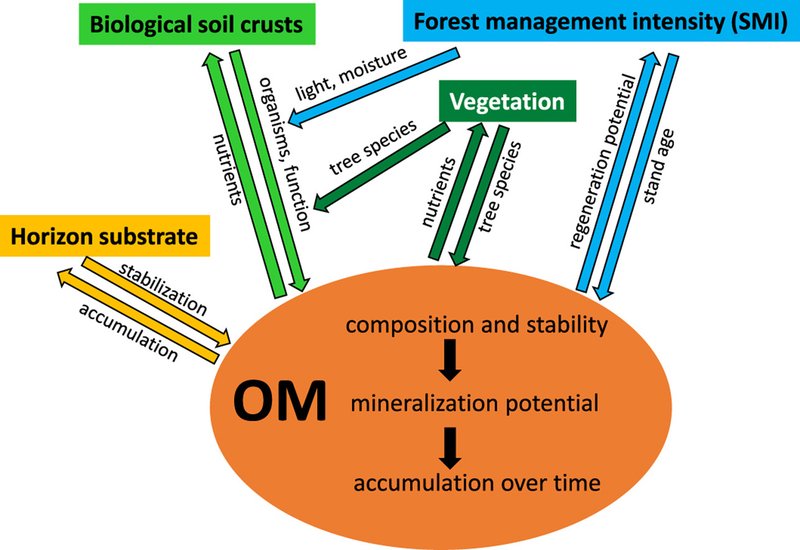Research Highlights
SOIL ORGANIC MATTER STABILIZATION MECHANISMS
Biocrusts in Forest Soils Stabilize OM
Sept. 1, 2021
Biological soil crusts (biocrusts) play an important role in the biogeochemical C-, N- and P-cycles but there is limited knowledge about their effect on the composition and stability of organic matter (OM) in soil. In pine and beech dominated temperate forests, the different compartments of biocrust, crust-adhering soil and crust-free soil were analysed by pyrolysis field ionization mass spectrometry (Py-FIMS) and C K-edge X-ray absorption near edge structure (XANES) spectroscopy. Phototrophic biocrust communities had been determined morphologically. Predominant tree species affected OM composition and stability but an overriding effect of biocrust organisms was observed. In biocrusts, the OM mineralization potential was high due to a high carbohydrate/ketone ratio and a high proportion of the fatty acid C22:0. A high proportion of free fatty acids in combination with a high carbohydrate proportion was identified as a relative marker for biocrusts and additional high proportions of lignin dimers were specific for samples under pine. In biocrust under pine, OM in soil compartments was characterized by large proportions of long-chain aliphatics from plant cuticular material. In A-horizon substrate under beech, OM compound classes were not affected by phototrophic species richness, suggesting functional redundancy of these biocrust organisms with regard to OM composition. In contrast to A-horizon substrate, OM in C-horizon substrate was characterized by a higher proportion of easily decomposable material. Under pine, forest management intensity (SMI) affected OM by stand age and density due to effects on phototrophic biocrust species. We conclude that compartment, vegetation, horizon substrate and SMI affected OM composition and stability, and biocrusts hence contributed to soil OM diversity in forest ecosystems.
